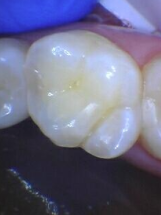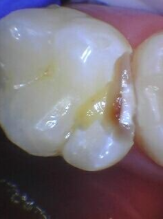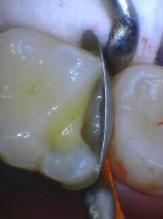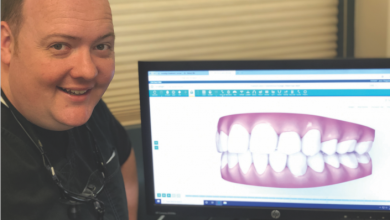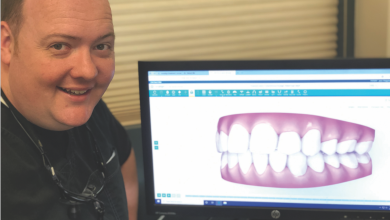How are Cavities Repaired?
Last month I presented a photo essay of a complex replacement of missing upper front teeth using dental implants with crowns and bridges. The number of people needing that type of work is relatively small. However, almost everyone has had a cavity and needed a filling to repair that cavity. So I decided to show you all how a cavity is identified and repaired.
In this first photograph we can see a molar tooth that looks normal – the tooth is clean and there is minimal staining in the grooves of the chewing surface.
However, when we look at a “bitewing” radiograph of the tooth, we can see a dark area that shows where a cavity has formed.
If a cavity such as this is left untreated, it will often times penetrate to the nerve in the center of the tooth, causing symptoms of sensitivity to hot or cold temperatures and sweet foods. When these symptoms are noted, it is not unusual for a tooth to require a root canal and a crown in order to properly repair the damage caused by the cavity. This treatment is, unfortunately, much more expensive than a filling. So it is better to detect and treat tooth decay in its early stages rather than in its advanced stages.
When the tooth is “opened up” it is possible to see visually what was previously visible only with the aid of radiographic films. The bright white is the damaged enamel layer and the dark brown is the cavity penetrating into the dentin layer of the tooth.
Once the cavity is removed and the tooth is “clean”, special filling forming barriers are placed to help shape the filling material to the proper anatomic contours.
A tooth colored composite resin filling material is then placed into the hole in the tooth. The composite is layered in increments, which improves its physical properties for durability and integrity. One can see that the final result mimics the natural tooth very closely and is practically indistinguishable from the surrounding tooth structure.
Today’s Dentistry
1530 Siskiyou Blvd.
Ashland, OR 97520
(541) 482-7771
Check out their website here

